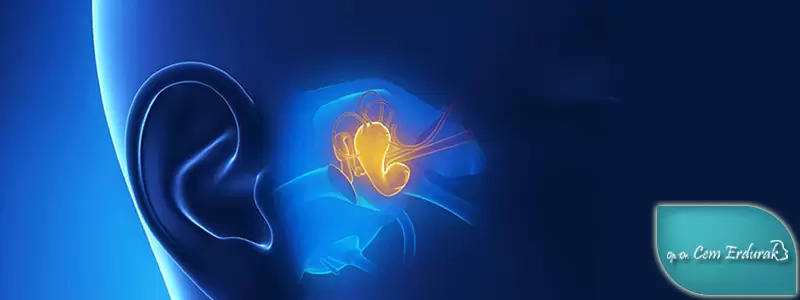
The eardrum is a thin membrane that vibrates when it encounters sound waves. The middle ear is an air-filled space behind the eardrum. When the eardrum vibrates, the small bones in the middle ear cavity (anvil, stirrup, hammer) vibrate and transmit sound to the inner ear. In the inner ear, the nerves that transmit sound to the brain are stimulated. Between the middle ear and the nose is a small canal called the Eustachian tube. The function of the Eustachian tube is to equalize the air pressure in the middle ear cavity with the atmospheric pressure in the external environment.
The most common ailment in young children is ear infections. Most ear infections result from a blockage of the canal connecting the throat to the ear. These infections can be dangerous in the future if not treated in due time. Symptoms of discomfort in the eardrum are; hypersensitivity, anorexia and fever.
Outer Ear Inflammation
Inflammation occurs when the skin of the ear canal takes impact. If your child has runny ears for too long, or if they insert a foreign object into the ear and damage the eardrum, it can cause an infection in the outer ear. Symptoms observed are headache, pain in the ear, red dots in the ear canal, discharge from the ear and itching.
Otitis Media
Acute otitis media is an inflammation of the middle ear behind the eardrum. In children, because the Eustachian tube is shorter than in adults, it is easier for germs to reach the middle ear from the nose. As a result, inflammatory fluid accumulates in the middle ear; fluid pressure causes pain and the eardrum does not vibrate. Therefore, some hearing loss occurs during otitis media. When bacteria are destroyed with appropriate drugs, the fluid in the middle ear disappears and hearing improves.
Otitis media is a common disease in children. 2/3 children under 3 years of age experience at least one case of otitis media. Acute otitis media treatment is administered with antibiotics. Otitis media is common in children with frequent upper respiratory tract infections. For this reason, colds and ear problems are more commonly encountered, especially in the first two years.
What are the symptoms?
Older children may express feelings of fullness, pain and hearing loss in the ear. Anxiety, sleep disturbance or loss of appetite may be the first signs in young children. Children of all ages can have fever.
These symptoms are often accompanied by complaints of upper respiratory tract infections such as runny nose and cough. Serious infections in the middle ear can cause perforation of the eardrum. As a result, the inflammation in the middle ear flows out of the ear canal, the pain decreases and the temperature rises. The eardrum hole usually closes naturally as a result of treatment.
What Can be Done to Prevent the Disease?
Immunity provided by substances passing through breast milk in newborns prevents the development of otitis media. The prospects of breastfed infants during feeding is more favorable for the normal functioning of the Eustachian tube than bottle-fed infants. Therefore, otitis media is less common in breastfed infants than it is in non-breastfed infants. If the baby needs to be bottle fed, it is better to feed in a sitting position.
The recovery time of the middle ear can be variable. Even if untreated, natural recovery occurs within 48 hours. Sometimes, fluid remains in the middle ear for 2 weeks to 2 months, even if treated with antibiotics. This fluid usually disappears on its own, but hearing deteriorates during this time. Inflammation of the middle ear is not contagious, but its main cause may be an upper respiratory tract infection.
Is Home Treatment Possible?
Otitis media should be examined by a physician. Home remedies are designed to alleviate the child's condition. Pain relievers and antipyretics can provide a comfortable sleep. Children with ear discharge should not swim, water should not enter the ear. Your physician will tell you how to prepare earplugs.